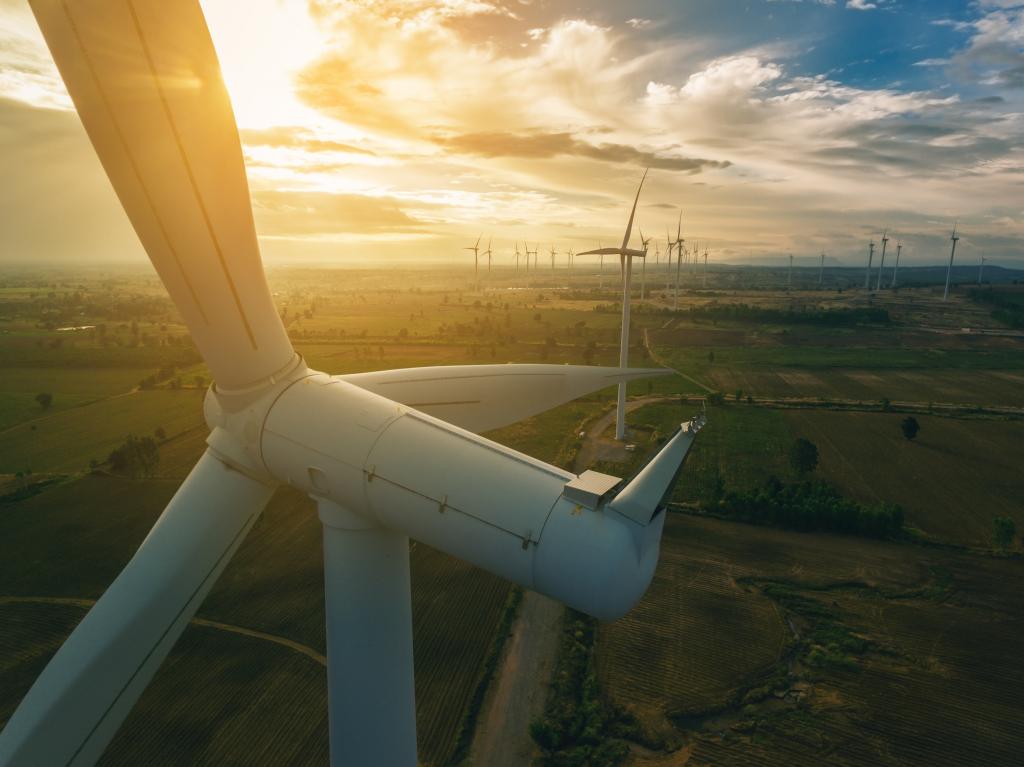
Questions and answers on the subject of different renewable technology a landowner might consider…
What is anaerobic digestion?
Anaerobic Digestion technology takes certain kinds of organic waste matter (anything from domestic kitchen waste to by-products of industrial processes like cheese making to certain crops or animal manure) and breaks it down in a large container to create gas. That gas is then used to create heat and/or power or it can be injected into the Gas Grid and sold. What’s left over in the container (‘digestate’) can be used for a number of things including fertiliser.
What is a hydro plant?
A hydro plant uses a flow of moving water to create electricity. Sizes can range from massive hydroelectric dams to much smaller micro-hydro or pico-hydro systems (sub-5kW) whose turbines would easily fit into a car boot. The faster the flow or the further the water falls, the more power you are likely to be able to generate. Unless you intend to use the power yourself or sell it locally via a Power Purchase Agreement then you will need a Grid Connection to be able to export it.
What is solar thermal?
More usually seen on a smaller domestic scale rather than as larger commercial projects, solar thermal technology uses the sun to heat liquid contained in either panel (that look a lot like standard solar PV panels) or a system of tubes. The heated liquid is then run to a hot water cylinder or to a heat transfer unit.
What is a solar farm?
A large number of Solar Panels, usually connected to the Grid via a Substation, are designed to generate electricity for sale. Solar farms can range in size from small systems of a few acres, often developed by community energy groups or individual landowners for their own use, to massive multi-gigawatt systems using millions of solar panels over hundreds of square kilometers. The largest in the world currently is a 2,700MW system in India that is being increased to 3,500MW (in context, Hinkley C will come in at 3,260MW). Most commercial developers in the UK will consider sites of at least 100 acres in order to achieve economies of scale.
What is a solar panel?
Solar panels (more accurately ‘solar photovoltaic panels’) use the sun’s rays to generate electricity. Panels can be added to the tops or sides of buildings or can be mounted and placed on the ground. The electricity generated can be used locally if there is a demand for it or the panels can be connected to the Grid and the power exported and sold via a Power Purchase Agreement. Sometimes the point of connection to the grid requires cabling to run through third party land via a Cable Easement.
What is a wind turbine?
A wind turbine is the modern equivalent of a windmill except the turning blades are now used to generate electricity rather than to grind crops. The flow of air past the blades turns a shaft which via a gearbox then drives a generator to produce the electricity.
The first known wind turbine that produced electricity was constructed in Scotland in 1887. Multiple wind turbines together are known as a wind farm. Those placed on land are known as ‘on shore’ turbines whereas those at sea (whether secured to the sea bed or floating) are known as ‘off shore’.
New onshore wind farms within England are now rare due to a change in planning policy brought about in 2015 by the Conservative Government despite it being one of the cheapest forms of renewable energy.
What is battery storage?
Battery storage systems are a relatively recent addition to utility scale renewable technology projects but can also work as standalone projects. When combined with electricity generation battery storage (‘co-located’) means a developer can store generated electricity when the price they can get for the power is cheaper (middle of a hot, sunny or windy day) and export it to the Grid later when prices are more expensive. As standalone projects they can import electricity from the Grid when it’s cheap, store it, and then export it back when prices are more expensive or when the Grid calls for it.
The footprint of a typical battery storage system is usually far smaller than the Solar Farm it might support but most utility scale co-located and standalone battery storage systems will require a Grid Connection which may be costly or difficult to obtain in certain areas depending on how congested the network is in the local area.
What is planning permission?
Obtaining planning permission for a renewable technology project is costly but fundamental as it is the consent required for a particular development obtained from the relevant local authority. The Local Planning Authority has to consider the views of not only the local community but also statutory consultees (Highways, Environment Agency etc) together with any relevant local and national planning policies before coming to a decision. They can also impose planning conditions that the developer has to meet.
If certain criteria are satisfied then some smaller projects (mainly rooftop solar) may be able to proceed without formal planning permission under what are known as permitted development rights.
What is a Grid Connection?
Referring to a grid connection is usually to an electrical connection between a renewables project and either the electricity Transmission Network or the electricity Distribution Network. It is required in order to import and/or export electricity from the National Grid and is another fundamental part of most renewable energy projects.
As the National Grid system operators themselves put it, the difference between the Transmission Network and the Distribution Network is like the difference between motorways and B-roads. The Transmission Network moves high voltage electricity from where it is generated through to where it’s required. The voltage is then stepped down before the Distribution Network feeds it through to wherever it is consumed.
Whilst larger renewable technology projects can connect directly to the Transmission Network to feed power back into the Grid, the application fees are higher, the capital costs are larger and the times scales to get a connection are much longer. Smaller projects will usually connect to the Distribution Network. Whether a connection can be obtained at all will depend on how congested the local network is and the cost of a connection will depend on a number of factors including the distance between the project being developed and the point of connection to the grid which may some distance away.
For certain projects (such as anaerobic digestion) a ‘grid connection’ can also refer to the connection to the gas grid network in to which the gas the project generates is injected.
What is a substation?
The National Grid runs at a certain voltage. A solar farm or a wind farm will not generate electricity at the same voltage so in order to make sure the power can be exported, a substation raises the voltage of what’s produced to match the Grid.
For utility scale renewable technology projects the substation will typically resemble a cross between a shipping container and a well built shed constructed on a concrete plinth. It is common for the local network operator to take ownership of the substation constructed by the project developer during the lifecycle of the project, it then becomes part of the wider electricity network infrastructure.
Landowners with renewable projects on their land may need to grant the network operator a lease of the substation, in some cases for longer than the project itself may run for.
What is a cable easement?
Sometimes electricity cables between a renewable technology project and the point of connection to the Grid may need to run under land owned by different people. The project developer may need to approach the different landowners and request a legal agreement allowing them to place, use and repair the cables. This will involve a payment by the developer to the landowner and the terms of the agreement are often negotiated at the start with the help of a landowner’s land agent.
What is a power purchase agreement?
A power purchase agreement (‘PPA’) is the way in which renewable generation projects get paid for the power they produce. They tend to be long term contracts between a buyer and seller of the electricity that a project generates and will set out the price payable, the frequency of billing and to where the power will be delivered (e.g. whether this is via export to the Grid or whether electricity is taken directly to somewhere nearby that can use it, known as a ‘private wire PPA’). A power purchase agreement will form one of a developer’s fundamental requirements in building out renewable energy projects.
If you would like further information, please get in touch with our Energy Team who would be happy to assist you.
